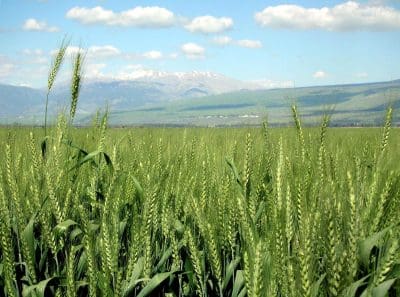A REPORT from a US government representative in Islamabad, Pakistan, this week published news that the Government of Pakistan has authorised subsidies on the export of up to 2 million tonnes (Mt) of wheat.

Wheat growing in Pakistan’s Sindh province. Photo: International Network for Natural Sciences
This comes ahead of imminent receivals from another likely bumper winter-crop harvest for Pakistan.
The USDA report said it seemed Pakistan’s government was faced with the option of either reducing its stocks of wheat by subsidising exports, or by reducing 2018 procurement.
The Pakistani Government only procures about a quarter of the crop, with half remaining in villages and the remaining quarter entering the open market directly.
Its support price is well above prevailing international prices, which in practicality prevents Pakistan from exporting wheat when a subsidy is not in place.
High internal price
Pakistan maintains a high domestic wheat price with generous government support, which makes domestic prices equivalent to approximately US$310/t.
To stop imported grain competing against it, Pakistan has a tariff of 60 per cent on wheat.
Except to some regional markets, exports without a subsidy are not commercially viable because Pakistan’s domestic wheat prices are about 80pc higher than the prevailing international price.
The export subsidy scheme, in effect until 30 June 2018, would authorise subsidy payments of up to US$159/t on a maximum 2Mt of wheat in an attempt to clear stock prior to the conclusion of the upcoming 2018 harvest.
The relatively high wheat support price, rising procurement, and flat off-take resulted in stocks of government-held wheat reaching a record 10.7Mt following the 2017 harvest.
Self-sufficiency goal
Guaranteed returns to the farmers who are able to sell to the government provide a strong incentive for them to continue growing wheat, thereby supporting Pakistan’s goal of self-sufficiency in wheat.
However, as global wheat prices have declined, the pursuit of wheat self-sufficiency through support prices has become increasingly costly.
Source: USDA
Grain Central: Get our free daily cropping news straight to your inbox – Click here



HAVE YOUR SAY